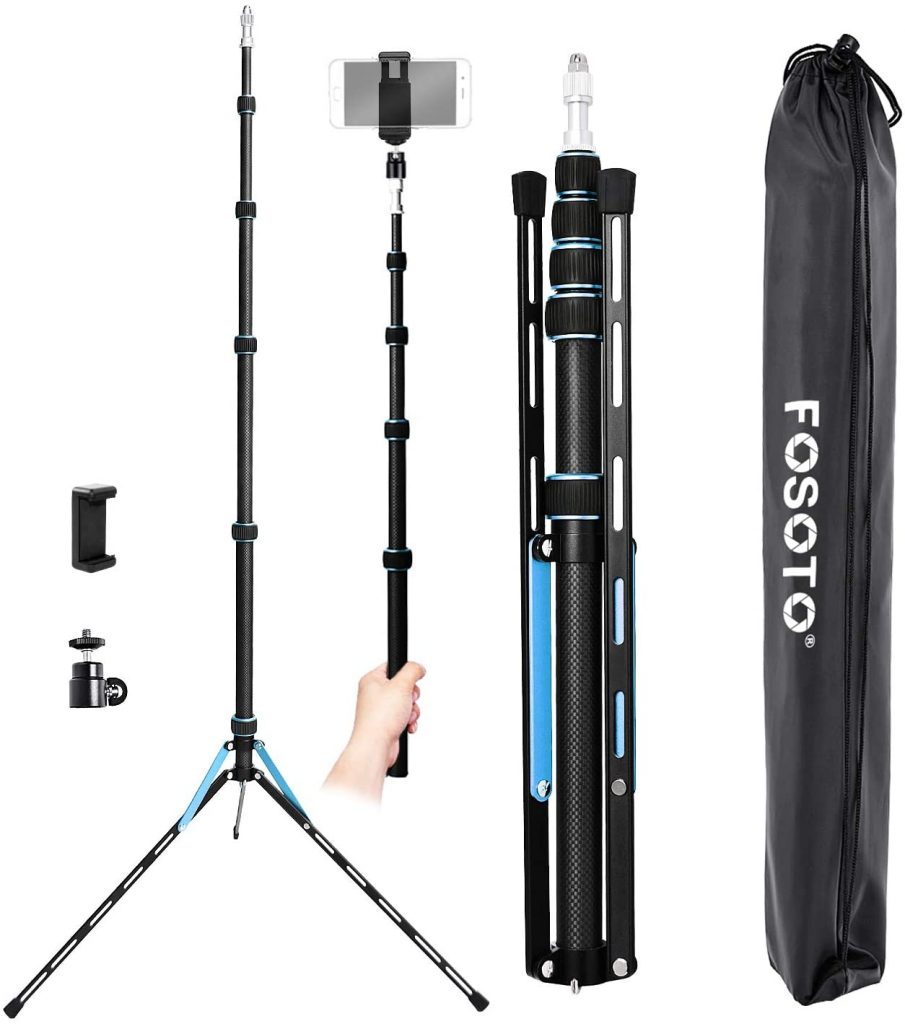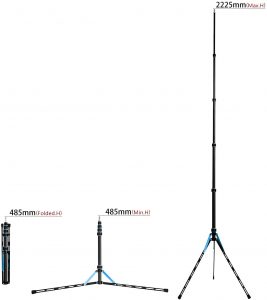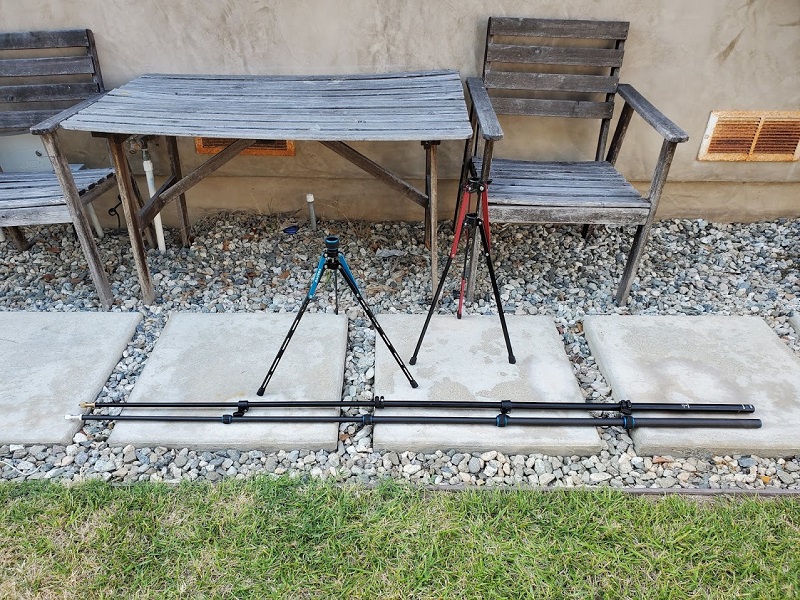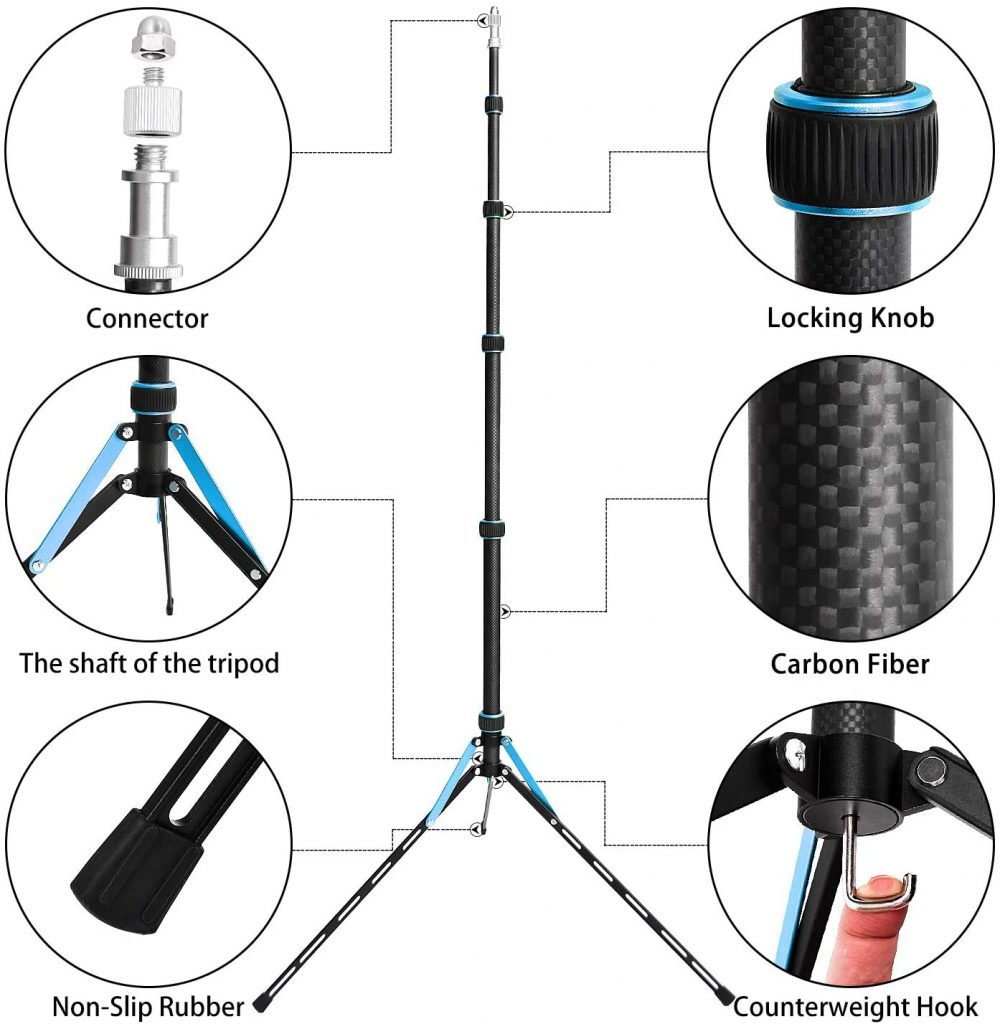L’articolo è riportato dal sito collegato al link che state leggendo. Clic per collegarsi al sito originale.
Clic to view the source link
How would you like a stable, nearly invisible lightweight stand with a removable center column that can convert to a monopod? Here’s a review of the Fosoto carbon fiber stand, which appears to be designed to compete with the Manfrotto Nanopole Carbon Fiber.

Stands are essential to 360 cameras not only when shooting stationary photos, but also to create the invisible flying camera effect. Unlike selfie sticks or monopods, lightstands have built-in tripods that are designed to be wide enough to support the light stand even when fully extended, making them generally more stable than monopods of similar size.
Fosoto is a lightweight light stand with a removable center column that can be used as a monopod. It appears to be very similar to the Manfrotto Nanopole Carbon Fiber, a lighter version of the Nanopole. Here’s a video of the Nanopole Carbon Fiber.
The Fosoto is about 7.3 feet tall (222.5 cm) with a large base (radius of 10 inches to 17.5 inches) yet collapses to a compact size of around 1.6 feet (48.5 cm). The center column is real carbon fiber and is very lightweight. The stand weighs only about 1.3 lbs (574 grams), almost half the weight of my Nanopole 2.3 lbs. (1064 grams).

The stand has a 3/8 connector and includes a 3/8 to 1/4-20 adapter, which means it can be used with almost any camera.
The stand has 5 sections and uses twist locks which appear invisible to 360 cameras. In addition, they can be locked or unlocked simultaneously, unlike the original Nanopole’s knobs that had to be loosened and tightened one by one. The Fosoto’s legs are also low profile and appear very thin in the nadir of a 360 photo.

As I mentioned, one of its features is that the center column is removable and can be used as a monopod. You simply have to unscrew it from the base. The monopod is quite long at around 6.3 ft (193 cm). The Nanopole’s column is about the same length, but is twice as heavy. I haven’t tried the Nanopole Carbon Fiber, but I expect its center column to weigh about the same as that of the Fosoto.

Unlike the Nanopoles, the Fosoto’s monopod has a 3/8 tripod hole at the bottom which means it can be used with other stands. The Fosoto features a spring-loaded hook at its base for hanging a sandbag or other weight. The Nanopoles also have a hook, but it is on side of the base.
However, the Nanopole and Nanopole Carbon Fiber have advantages over the Fosoto. First, both the Nanopole and Nanopole Carbon Fiber have a leveling leg. One of the legs can be extended, which can be used to keep the stand vertical in an incline. Second, both Nanopole and Nanopole Carbon Fiber have legs that can be collapsed to a smaller radius of around 7 inches. Finally, the original Nanopole’s segments can be rotated arbitrarily. This lets you rotate the camera without moving the stand. The Fosoto’s segments cannot be rotated (I believe the Nanopole Carbon Fiber’s segments also cannot be rotated).
SHOULD YOU BUY IT?
I’m pleased with the Fosoto and it performs pretty much as advertised. However, the Nanopole’s leveling leg, the wider range of adjustment for its legs, the ability to rotate it without moving the stand are very useful to me, and on the whole, I find that they are more important than the convenience of the twist locks or the weight savings. If your budget allows, the Nanopole Carbon Fiber appears to combine the best of both the Fosoto and Nanopole. Meanwhile if you want to see other selfie sticks and monopods, check out this selfie stick and monopod buying guide.
- Fosoto stand (check price). If out of stock, check out this other very similar stand (but it doesn’t have a spring-loaded hook).
- Manfrotto Nanopole (check price)
- Manfrotto Nanopole Carbon Fiber (check price)
The post Fosoto light stand converts to a monopod (Manfrotto Nanopole Carbon Fiber clone review) appeared first on 360 Rumors.















